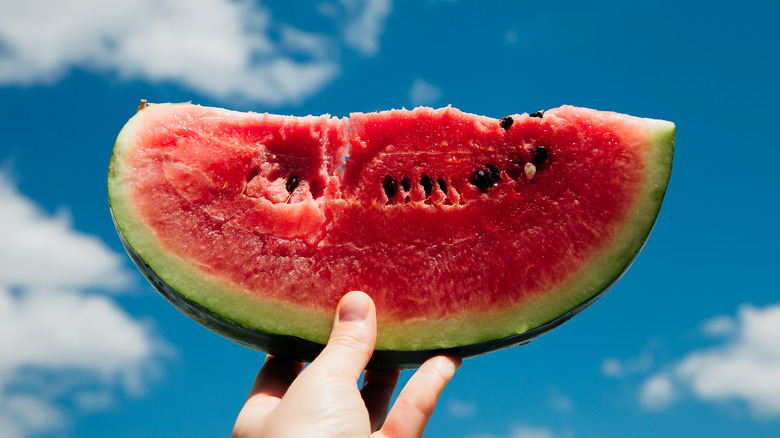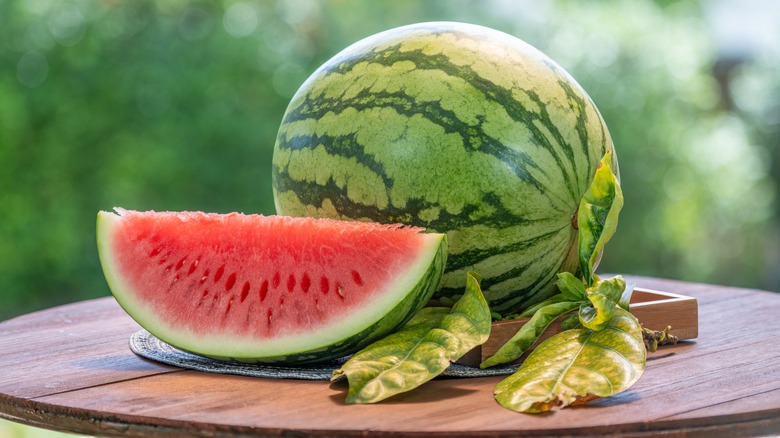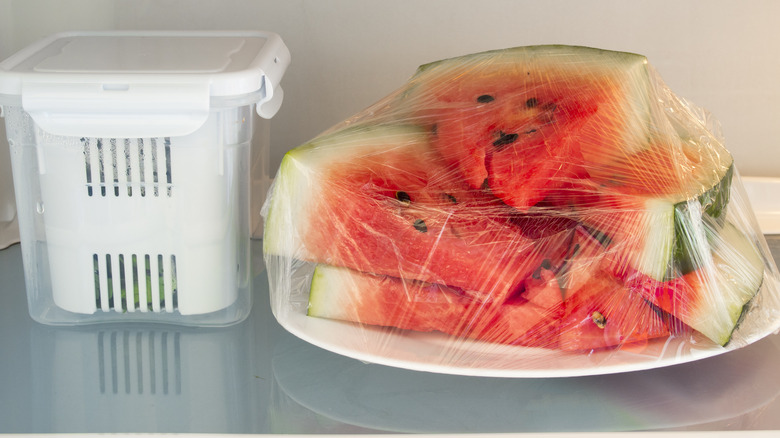Why Seedless Watermelons Last Longer Than The Seeded Kind
If you're an avid watermelon consumer, melon guru, or whatever you fancy yourself as, then maybe you had a sneaking suspicion that seedless watermelon stays fresh longer than the old-school, seeded ones — you'd be spot on. If you were worried maybe you simply picked a bad watermelon from the store, that's probably not the case.
There's some real science out there backing up the idea that seedless watermelons last longer than their seeded counterparts. The reason boils down to how seedless watermelons are grown, and more importantly, what they are. In contrast to seeded watermelons, which are naturally pollinated and grow through traditional reproduction, seedless watermelons are a hybrid variety that doesn't produce mature seeds. Because of this, they have a different cell structure that gives them a slightly longer shelf life once they're harvested and even after they're cut open.
This doesn't mean they're invincible, as you'll still want to keep them cool and covered once you slice into them. But the lack of mature seeds helps preserve their moisture content just a little longer. If you're looking for a melon that can hang out in your fridge for an extra day or two without turning to mush, seedless is the way to go. FYI: Seedless watermelons aren't technically seedless, either. They just don't contain those mature, black seeds. They have white, soft, edible seeds instead.
It all comes down to genetics
The trick to seedless watermelon's staying power starts at the DNA level. These melons are triploids, which means they're bred from a combination of watermelons with different chromosome counts. Basically, plant breeders take a watermelon with two sets of chromosomes and cross it with one that has four sets. The result is a watermelon with three sets (hence the name) which doesn't form functioning seeds and is therefore unable to reproduce.
That factors into freshness because the absence of developing seeds means less internal stress on the fruit. Seed development takes energy and moisture. In a seeded melon, some of the plant's finite resources are used to ripen those seeds in preparation for reproduction. That can lead to quicker breakdown of the flesh after the fruit has been harvested since there is a higher demand for the melon's resources. In seedless varieties, there's no active seed development, which allows the flesh to monopolize on the resources available and thus retain its quality a little longer — a perk of modern agricultural science.
Storage still matters, but you have some wiggle room
Just because your seedless watermelon has a biological edge doesn't mean you should leave it sitting out in the sun or uncovered in the fridge. Ideally, you should store whole watermelons at room temperature and sliced watermelons in the fridge (wrapped tightly to prevent drying out).
That said, seedless varieties do give you a bit more grace. While a seeded watermelon might start turning grainy or watery after just a day or two in the fridge, a seedless one often holds its texture and sweetness for three or four days when stored properly. That makes a big difference if you're meal prepping or just don't want to rush through a massive melon in one go.
Next time you're standing in front of a mountain of melons at the store wondering if those little black seeds really make a difference, now you know that it's more than just the convenience of not having to spit them out. For longer-lasting, more convenient, and just-as-delicious slices, seedless watermelon wins the shelf-life game. Now, all you have to do is to figure out a way to pick a sweet one every time.


